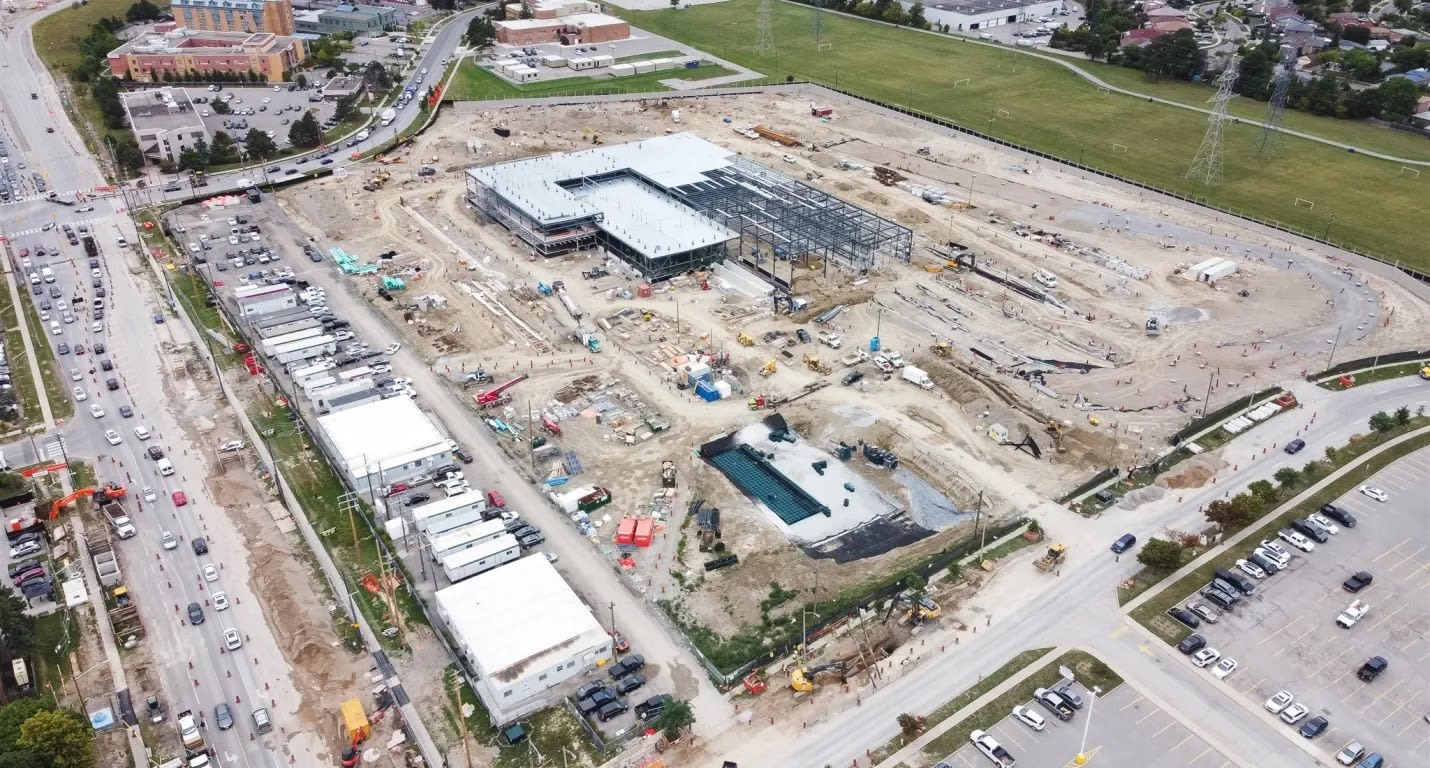Aerial flight gives perspective to massive Finch LRT project
We have drone footage that shows how far things have come – and where they are going.
Oct 8, 2020
Creating space for a light rail transit (LRT) project across Finch Avenue West requires a weighty effort to move tonnes of earth, pipes, and structures from Keele Street to Highway 27 and south to Humber College Boulevard.
But for a moment, let’s make things almost light as air.
A newly released aerial video provides a before and after look at the Finch Avenue West alignment from Fall 2019 to Summer 2020.
At the corner of Finch and Keele, large rotary drilling rigs tower above the intersection. (Metrolinx photo)
The ongoing pandemic has not slowed down the effort. To keep the project moving, the Finch West LRT constructor, Mosaic Transit Group, is using innovative tools as well as double shifts so crews can work safely and efficiently.
The bulk of work in progress is utility related and involves relocating services for electricity, water, sewer gas and telecommunications.
First, teams work to widen roads across the corridor. As a section of road is widened, another team moves in to relocate utilities – above and below ground.
Before excavating for the underground station and installing the dedicated LRT tracks along Finch Avenue, crews must peel back asphalt and soil to move buried pipes and structures out of the way. It is a complex job but an important step in the LRT construction.
Other project development includes the structural steel installation at the maintenance and storage facility (MSF), which began in spring and was completed in October. New water, sewage and gas pipes are being fitted on the site to bring utility services into the new building. Stormwater management ponds are also being constructed on the site to collect runoff from rain and melted snow – a sustainable way to protect local water quality.
Structural steel installation continues at the Maintenance and Storage Facility. (Metrolinx photo)
Crews replaced the Highway 400 bridge over two weekends in June using self-propelled modular transporters – large trailer platforms that are normally just called ‘SPMTs’ – to move two old and heavy bridges out and lift new ones into place.
New technology and mighty machines like the SPMTs and large rotary drilling rigs – or ‘pile drills’ – towering above the Finch-Keele intersection, propel the project forward. The rotary rigs are used to drill deep support walls into the ground for the Finch West station, portal, and pedestrian tunnel.
At every level – even far above – it’s cool work taking place in busy neighbourhoods.
by Erika D’Urbano Communications senior advisor
